Climbing plants bring life, color, and texture to fences, transforming plain barriers into beautiful green walls. Whether you want vibrant flowers, lush foliage, or a privacy screen, training climbing plants properly is key to achieving a healthy, attractive result. This guide walks you through everything you need to know — from plant selection to maintenance — so your fence becomes a living work of art.
1. Why Train Climbing Plants for Fences?
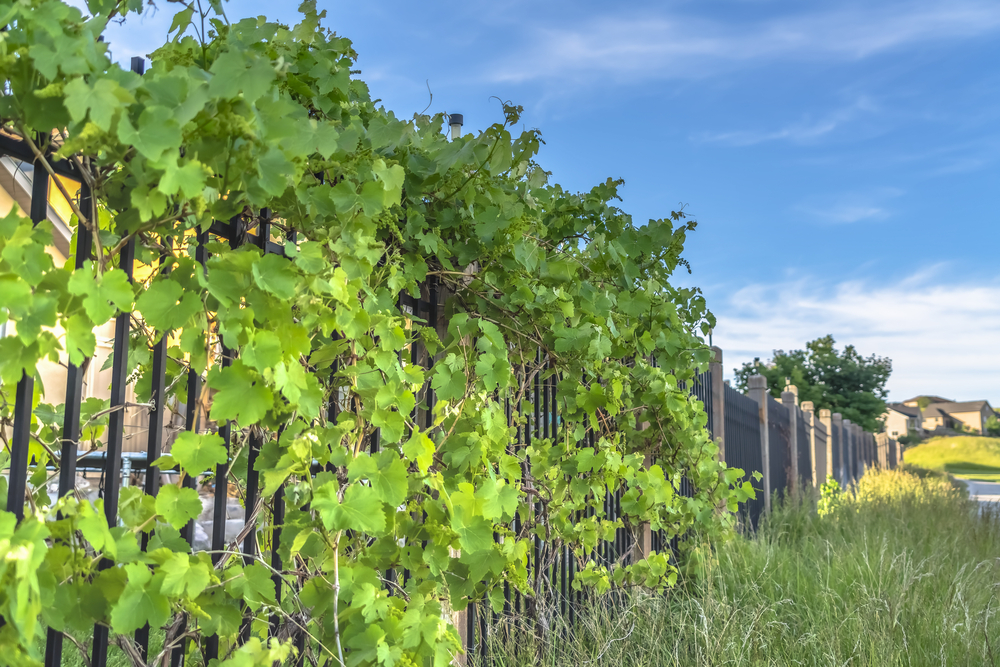
Fences are often functional but not particularly beautiful. Adding climbing plants serves several purposes:
- Aesthetic Appeal – Climbing plants can turn a dull fence into a lush, green feature full of color and fragrance.
- Privacy and Screening – Dense foliage acts as a natural privacy barrier while reducing noise.
- Wildlife Habitat – Flowering climbers attract pollinators like bees, butterflies, and even birds.
- Temperature Regulation – Plants shade fences, helping to keep the surrounding area cooler.
Training ensures plants grow in a controlled, tidy manner instead of becoming tangled or invasive.
2. Choosing the Right Climbing Plants
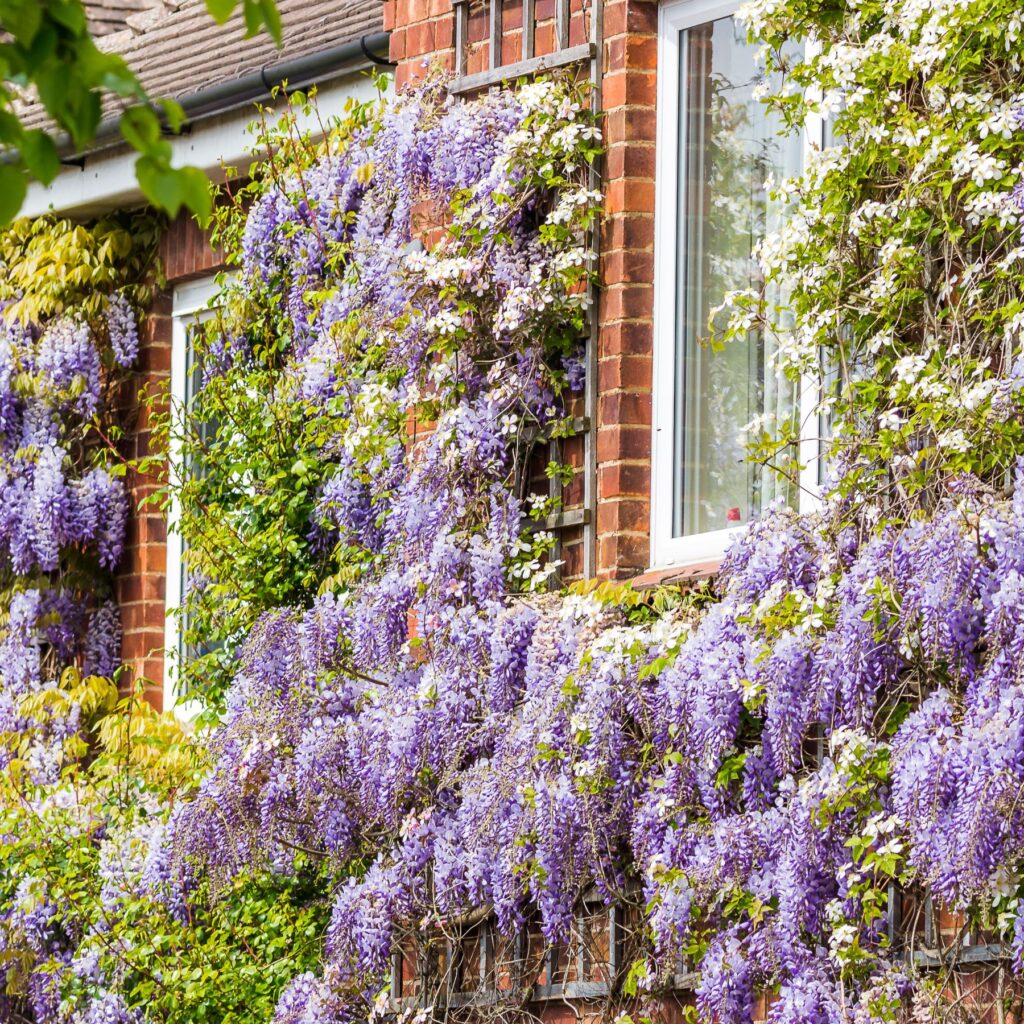
The success of your fence greenery starts with picking plants suited to your climate, fence type, and maintenance preferences.
Flowering Climbers
- Roses (Climbing or Rambling) – Classic romantic blooms; require sturdy support.
- Bougainvillea – Vibrant colors, thrives in sunny and warm climates.
- Clematis – Gorgeous flowers, ideal for mixing with other climbers.
Foliage-Focused Climbers
- Ivy – Evergreen coverage, low maintenance, but can be invasive.
- Star Jasmine – Glossy leaves, fragrant flowers.
- Virginia Creeper – Beautiful seasonal color changes.
Edible Climbers
- Passionfruit Vine – Exotic flowers and tasty fruit.
- Grapevines – Dual benefit of shade and sweet grapes.
- Runner Beans – Quick-growing with edible pods.
Tip: Choose plants that match your sunlight conditions — full sun, partial shade, or shade — to ensure vigorous growth.
3. Preparing Your Fence for Climbers
Before planting, assess your fence’s condition and suitability.
- Stability – Ensure the fence is sturdy enough to support plant weight, especially for woody vines like wisteria.
- Material Compatibility – Wood, wire mesh, and chain-link are ideal; solid walls may need trellis attachments.
- Protection from Rot – For wooden fences, treat the wood to resist moisture and decay.
You may also need to install trellises, wires, or mesh to give the plants something to grip.
4. Planting the Climbers

The planting process varies slightly based on species, but these general steps apply:
- Timing – Plant in spring or early autumn to give roots time to establish.
- Spacing – Follow the recommended plant-to-plant distance to avoid overcrowding.
- Soil Preparation – Loosen soil and mix in compost for better drainage and nutrition.
- Plant Positioning – Place climbers about 30–45 cm (12–18 inches) from the fence to allow airflow and prevent root damage.
- Initial Watering – Water deeply after planting to help roots settle.
5. Training Techniques for Different Climbers
Different climbing plants attach themselves in unique ways. Understanding their growth style helps you train them effectively.
A. Twining Climbers (e.g., honeysuckle, morning glory)
- Wind their stems around supports.
- Guide new shoots by wrapping them gently around wires or trellises.
B. Tendril Climbers (e.g., sweet peas, grapes)
- Use thin tendrils to grip.
- Provide mesh, string, or wire for tendrils to latch onto.
C. Clinging Climbers (e.g., ivy, climbing hydrangea)
- Use aerial roots or adhesive pads.
- Little support is needed, but you must guide growth early to avoid unwanted spread.
D. Scramblers (e.g., climbing roses, bougainvillea)
- Cannot cling on their own.
- Require tying to supports using garden twine or soft ties.
Pro Tip: Use biodegradable plant ties that allow stems to expand without damage.
6. Step-by-Step Training Process
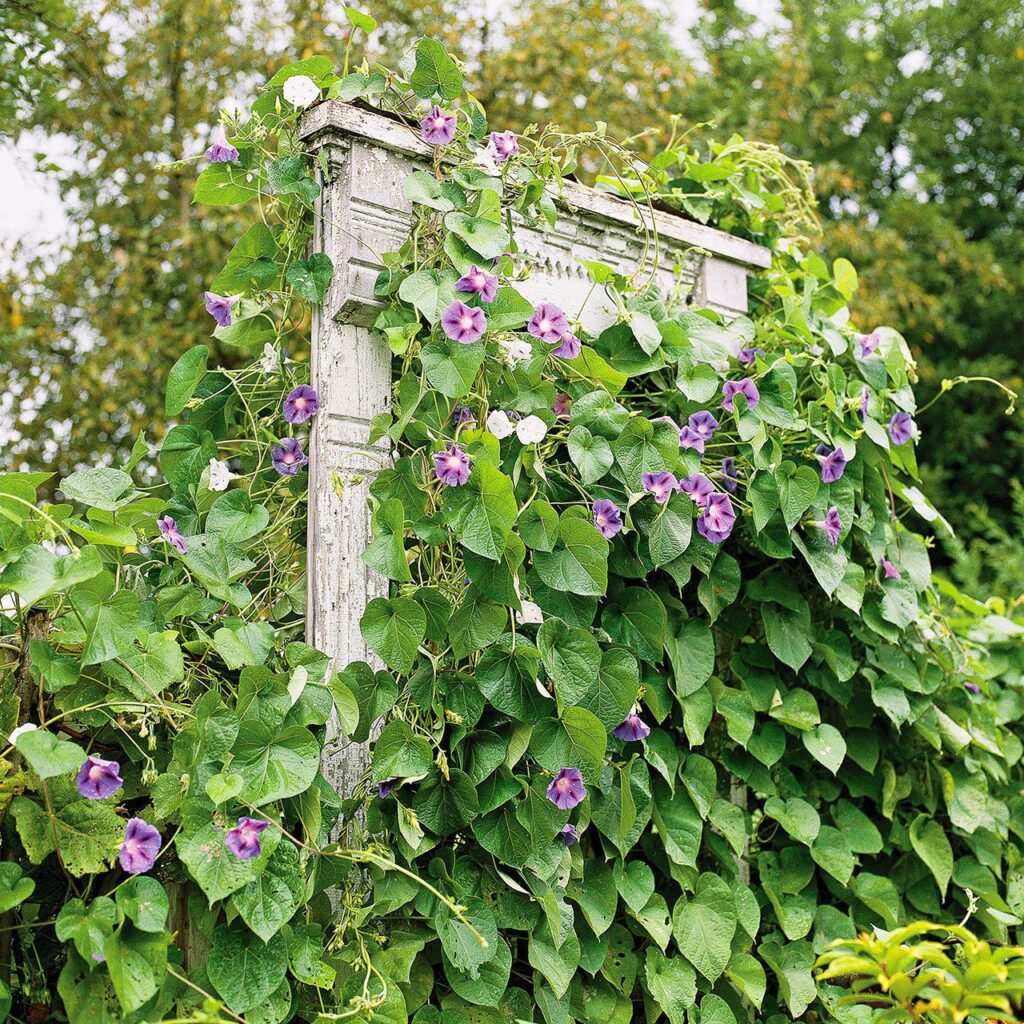
- Install the Support System – Trellis, wires, or mesh should be in place before planting.
- Direct the Young Shoots – Secure them loosely to the support to establish the desired growth pattern.
- Prune Early and Often – Trim side shoots to encourage vertical and lateral coverage.
- Tie at Intervals – Every 20–30 cm of growth, tie the stems to the support.
- Monitor Growth – Redirect runaway shoots and remove any dead or diseased stems.
7. Watering and Feeding Your Climbers
Healthy growth requires consistent care:
- Watering – Keep the soil evenly moist, especially during dry spells. Avoid waterlogging.
- Mulching – Apply organic mulch around the base to retain moisture and suppress weeds.
- Feeding – Use a balanced fertilizer in spring and a high-potassium feed during flowering for vibrant blooms.
8. Seasonal Care and Maintenance
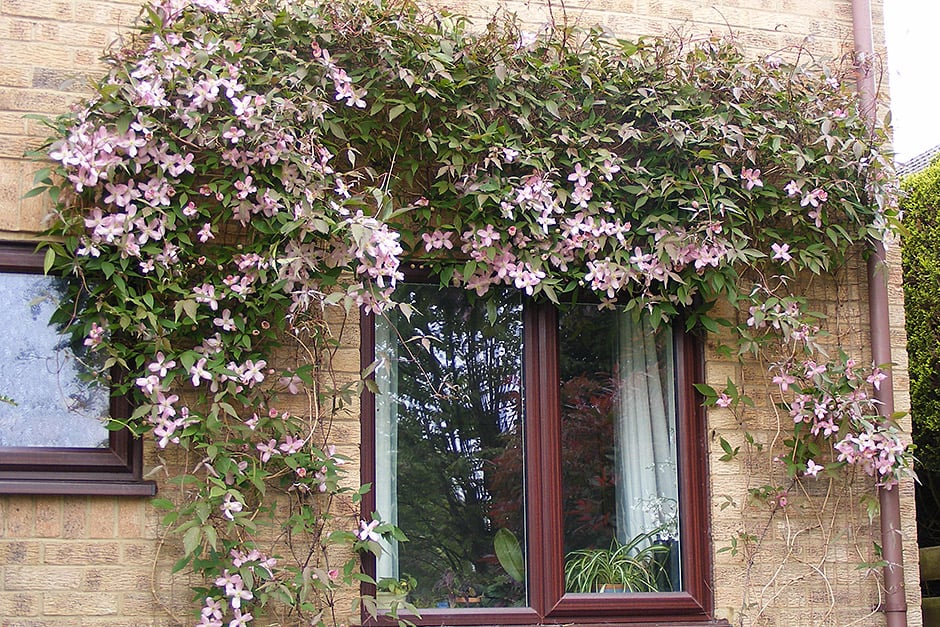
- Spring – Check for winter damage, prune dead stems, and start feeding.
- Summer – Train new growth, deadhead flowers, and water regularly.
- Autumn – Reduce feeding, remove fallen leaves, and check supports.
- Winter – For frost-sensitive plants, protect roots with mulch or horticultural fleece.
9. Common Problems and Solutions
- Overgrowth – Regular pruning prevents plants from becoming too heavy or invasive.
- Pests – Watch for aphids, spider mites, and caterpillars; use organic insecticides or introduce beneficial insects.
- Disease – Ensure good airflow to reduce fungal problems like powdery mildew.
- Support Damage – Inspect supports annually and repair as needed to prevent plant collapse.
10. Creative Design Ideas
- Mix Climbers – Combine flowering and foliage climbers for seasonal variety.
- Color Coordination – Match blooms with the fence color for a striking effect.
- Layered Planting – Use different heights and textures to create a living tapestry.
Final Thoughts
Training climbing plants for fences is both an art and a science. With the right plant choice, sturdy supports, and regular care, your fence can become a thriving vertical garden that offers beauty, privacy, and ecological benefits. Whether you dream of cascading roses, fragrant jasmine, or lush ivy, the satisfaction of watching your fence come alive is worth the effort.
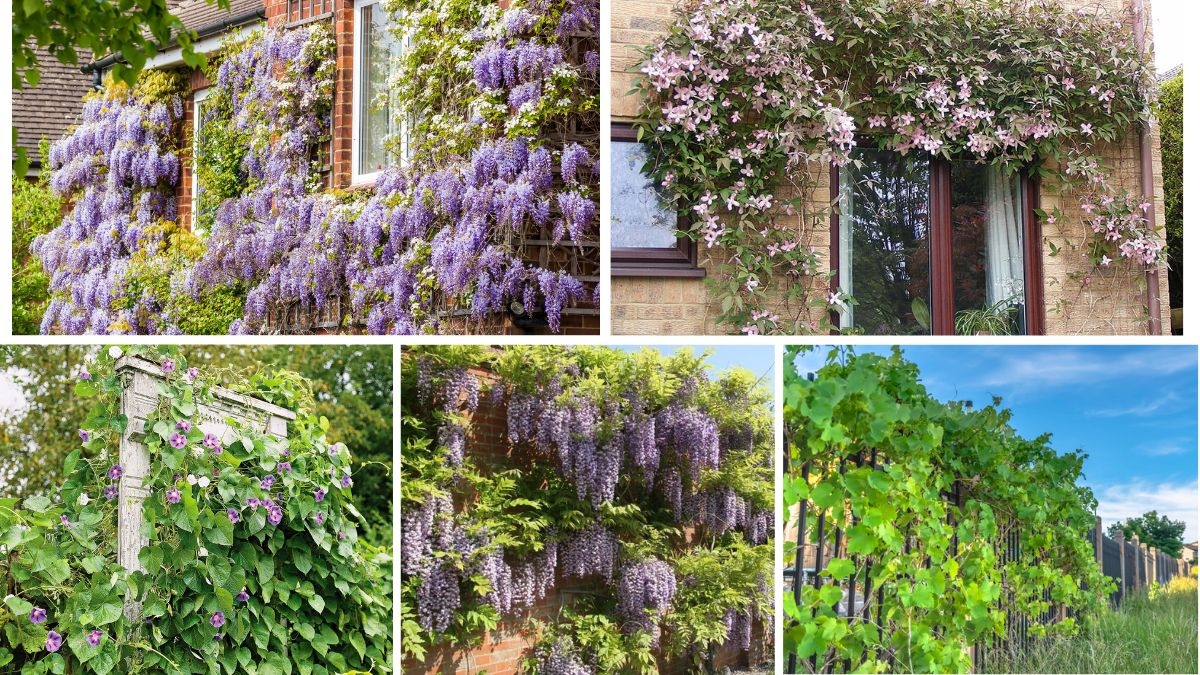
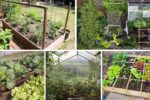

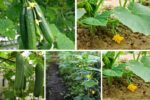
Leave A Comment